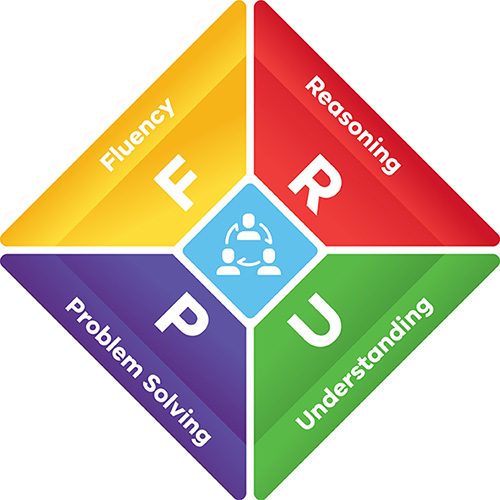The Birth to Level 10 Numeracy Guide is a multi-modal, interactive online guide that includes sections which together form a holistic understanding of numeracy, its relationship with mathematics, what numeracy progression looks like and effective numeracy teaching strategies.
The guide is a roadmap for individual practitioners as well as for whole-school approaches to numeracy learning and development. Prompts are included throughout each interrelated section to encourage reflection and interaction with the guide.
About the numeracy guide
The
numeracy guide presents dynamic approaches to developing student numeracy across the learning stages of:
- Birth to Level 2
- Levels 3 to 8
- Levels 9 to 10.
Videos and examples of numeracy are included in each section.
The resources will help you develop knowledge, understanding, confidence and capability in mathematics and numeracy.
A section has also been designed to
assist families in developing positive attitudes towards maths and numeracy at home.
Guide structure
Introduction
Learn about, and support, numeracy development across the curriculum from birth to Level 10 using this practical suite of resources.
Proficiencies

The Victorian Curriculum: Mathematics identifies a mutual relationship between learning in mathematics and numeracy. This relationship is shown in learning environments through the proficiencies of understanding, fluency, problem solving and reasoning. The proficiencies are fundamental to learning mathematics and working mathematically.
Understanding
Building a robust knowledge of mathematical concepts and structures. Students make connections between related concepts and learn to develop new ideas. They develop an understanding of the relationship between the ‘why’ and the ‘how’ of mathematics.
Fluency
The development of skills in choosing appropriate procedures, accurately carrying out procedures and using factual knowledge and concepts.
Problem solving
The ability of students to make choices, interpret, formulate, model and investigate problem situations, select and use technological functions and communicate solutions.
Reasoning
Developing the ability for logical, statistical and probabilistic thinking and actions, such as analysing, proving, evaluating and explaining.
The proficiencies are applied across:
- Number and Algebra
- Measurement and Geometry
- Statistics and Probability.
For more information see:
Reflective practice
Opportunities to discuss, explore and reflect on teacher practice, through all aspects of the planning cycle helps educators improve their individual and collective practice.
Numeracy focus areas
Discover numeracy through six
numeracy focus areas, developed from the Victorian numeracy learning progressions and numeracy research:
- developing number sense - quantifying numbers, using additive and multiplicative strategies
- exploring patterns and relationships - using number patterns and thinking algebraically
- using proportional reasoning - operating and interpreting decimals, fractions, percentages, ratios and rates
- understanding and using geometric properties and spatial reasoning
- understanding and using measurement
- exploring chance and data.
High impact teaching strategies (HITS) – numeracy
Ten evidence-based instructional practices that increase student learning.
These resources offer examples of how to use the HITS with a focus on developing students' numeracy and presents examples of HITS best practice from birth to Level 10.
The Numeracy HITS have the strongest impact on children and young people's learning when embedded into an ongoing improvement cycle.
Resources
Birth to Level 10 Numeracy Guide - resources to support planning, teaching and assessment.
Numeracy at home - information, advice and activities for families.
Evidence base - overview of contemporary research and numeracy practice in Australia.